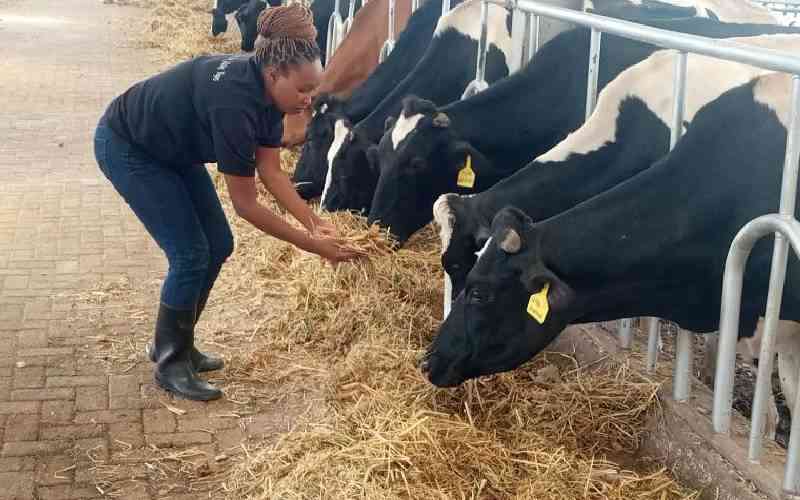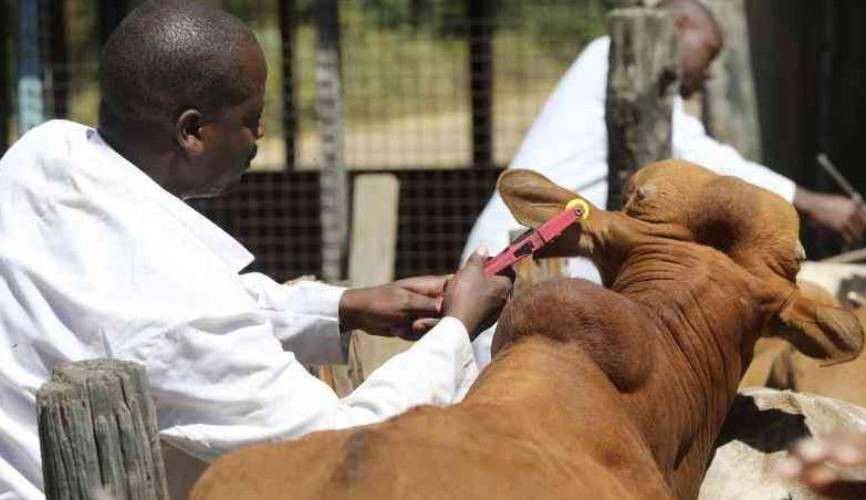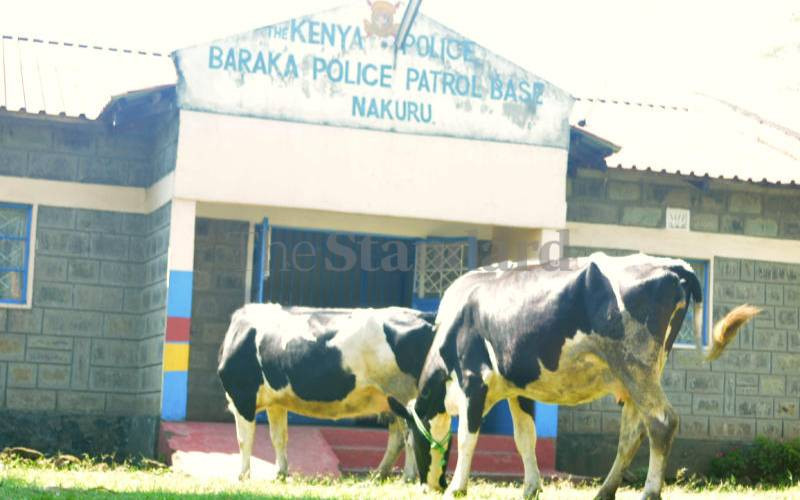Late last year, I had a sad encounter with one of my farmers. Mama Shiro is a small scale dairy farmer on the fringes of Ngong Hills. She lives in the same neighbourhood as my aunt and that is how I came to know her.
Mama Shiro had noted that one of her cows, the one with the best body score seemed sick though mildly. Since it was late in the evening, she thought it not wise to disturb a young family man on a Friday evening and decided she would call me early the following day.
But her cow didn’t make it through the night. Mama Shiro was distraught. She cherished the dead cow and had promptly informed me of its arrival as part of her last born daughter’s dowry payment.
She had two other Friesian crosses, and was eager to know what veterinary measures she needed to secure her new addition as it did not come with any medical records.
I had suggested a cocktail of vaccinations, including black quarter. She requested more time to raise money for the vaccinations.
I was actually to visit her farm the very weekend the animal died for lumpy skin disease, foot and mouth disease and anthrax vaccinations – whether or not she had the cash.
Mama Shiro’s case, and many other similar situations, make you think of the importance of livestock insurance to small scale dairy farmers whose livelihoods are tightly tied to milk production.
I rushed to her farm that Saturday morning and found the animal dead. With my fingers, I could, however, feel some warmth in the carcass, suggesting the cow had just died.
The black discolouration of the skin over the hind leg (thigh) gave a text book definition of a case of black quarter disease. The hip was swollen and it felt like there were dry leaves crackling under the skin. When Mama Shiro said the cow had lost appetite and had a slight limb on her hind arm, it was clear that the animal had succumbed to black quarter.
I needed no other test to confirm the diagnosis, but to prepare for disposal of the carcass.
Black quarter, also known as black leg or quarter ill, is an acute (has a short course), deadly bacterial disease of cattle and sheep but can on occasions affect horses.
The name black quarter derives from the characteristic blackening of hindquarter muscles. The causative bacteria (Clostridium Chauvoei) are present in soils from where they are picked by animals through ingestion of contaminated feeds or soils (during dry weather when animals graze close to the ground or following soil excavations on the farm).
The bacterial spores can remain in the soil for a long period of time. The bacteria reside in the intestinal tract and muscles of animals and under suitable conditions they turn around and increase in number and produce poisons that cause the disease.
Ironically, black quarter prefers animals with the best body conditions or the biggest in a herd. It therefore gets many farmers unawares. In cattle, it is common between six months and two years of age. The disease occurs throughout the year, though it is common in hot, humid or after sudden onset of cold weather conditions and when there is an abundance of feeds.
Stay informed. Subscribe to our newsletter
In sheep, it normally follows an injury resulting in an open wound, after tail docking, castration or shearing wounds for example. It is believed that the reduction in oxygen supply to such areas triggers multiplication of the bacteria and release of toxins into the blood stream.
Sudden death
The disease is characterised by a sudden increase in body temperature and very painful localised muscle swelling.
The skin, especially around the hip, shoulder, neck and back muscles, will be discoloured and when touched produces crackling sound like that of dry leaves. The animal will have tremors and will fall down.
The disease takes a short (just between 12-48 hours) course. The affected animals will in most cases be found dead without any history of sickness. It takes a serious farmer in touch with his animals to observe clinical signs of black quarter.
While the disease is treatable, its acute nature makes it hard for a farmer to quickly observe the clinical signs and call a vet in time.
If a veterinarian arrives in time and makes the right diagnosis, the chances of the cow being healed are high as the causative micro-organisms respond well to Penicillin combined with supportive symptomatic treatment.
Due to this tricky aspect of black quarter, the disease is better prevented than treated. Cattle should be vaccinated annually against black quarter. In outbreaks, all the animals not infected should immediately be vaccinated and given prophylactic treatment thereafter.
Don’t open the carcass of an animal suspected to have died of black quarter as this will further contaminate the environment with the bacteria. The carcass should be burnt or buried deep.
 The Standard Group Plc is a
multi-media organization with investments in media platforms spanning newspaper
print operations, television, radio broadcasting, digital and online services. The
Standard Group is recognized as a leading multi-media house in Kenya with a key
influence in matters of national and international interest.
The Standard Group Plc is a
multi-media organization with investments in media platforms spanning newspaper
print operations, television, radio broadcasting, digital and online services. The
Standard Group is recognized as a leading multi-media house in Kenya with a key
influence in matters of national and international interest.
 The Standard Group Plc is a
multi-media organization with investments in media platforms spanning newspaper
print operations, television, radio broadcasting, digital and online services. The
Standard Group is recognized as a leading multi-media house in Kenya with a key
influence in matters of national and international interest.
The Standard Group Plc is a
multi-media organization with investments in media platforms spanning newspaper
print operations, television, radio broadcasting, digital and online services. The
Standard Group is recognized as a leading multi-media house in Kenya with a key
influence in matters of national and international interest.









